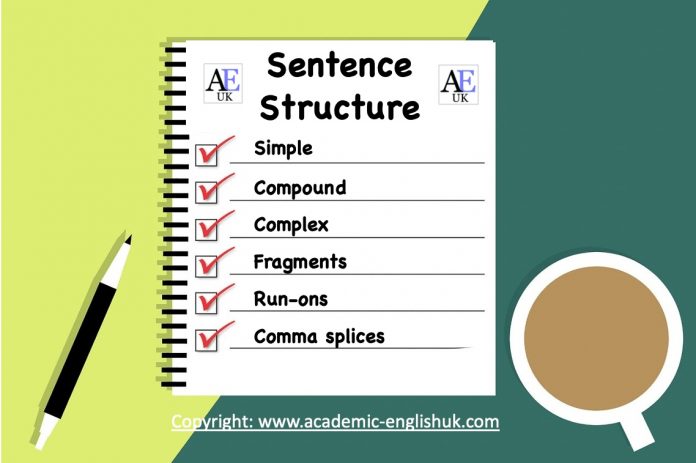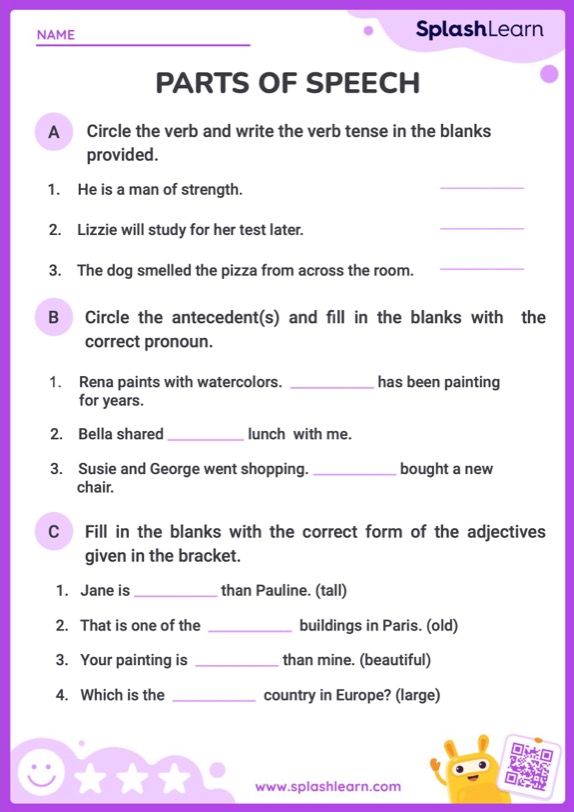Did you know that many students face challenges with sentence structure in their writing? A study analyzing student essays found that common errors include sentence fragments, run-on sentences, and incorrect verb forms. As educators, you play a crucial role in teaching sentence structure—the backbone of effective writing. Providing students with the right guidance and tools can nurture their creativity and empower them to convey their message with clarity and precision.
Math & ELA | PreK To Grade 5
Kids see fun.
You see real learning outcomes.
Watch your kids fall in love with math & reading through our scientifically designed curriculum.
Parents, try for free Teachers, use for free
In this blog, we’ll break down the key elements of how to teach sentence structure and provide actionable strategies to teach it effectively in your classroom.
What is Sentence Structure?

Sentence structure is how we arrange words in a sentence. When we write or speak, we use sentence structure to ensure our sentences are easy to understand and sound right.
In a sentence, we usually have a subject (who or what the sentence is about) and a predicate (what the subject is doing or what is happening to the subject). For example, in “The cat sleeps,” ‘The cat’ is the subject, and ‘sleeps’ is the predicate.
That’s sentence structure – it’s just about putting words in the right order so everyone can understand what we mean!
Teaching Sentence Structure 101
This section will guide you through the essentials of sentence structure- clauses, sentence types, fragments, and core patterns. You will also learn how to teach these concepts to kids in a simple and effective way.
What are Sentence Clauses?
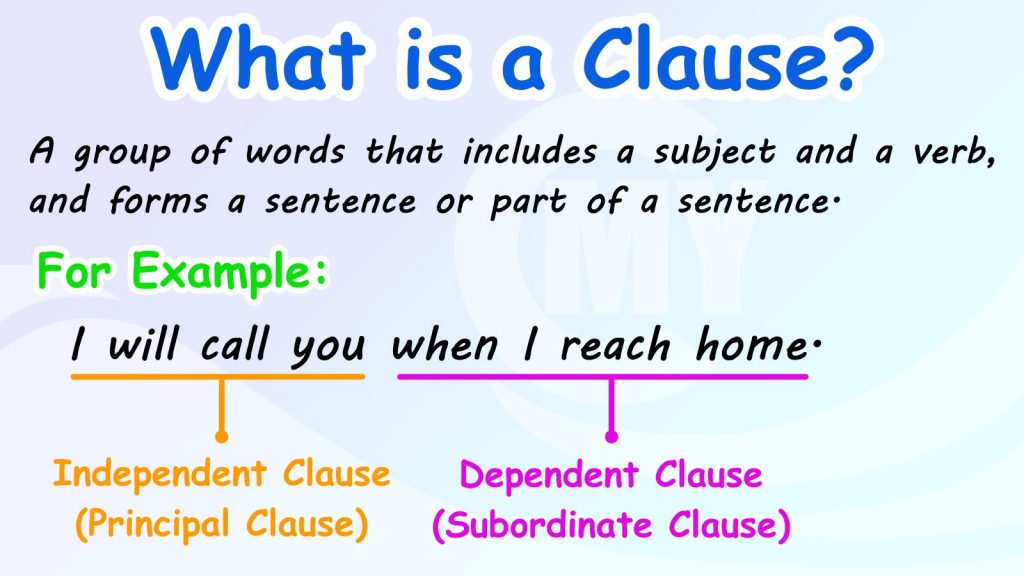
Sentence clauses are the building blocks of sentences and are essential for understanding the structure of a sentence. A clause is a group of words that contains a subject and a verb (predicate) and expresses a complete thought. It can function independently as a complete sentence or as part of a larger sentence.
There are two main types of sentence clauses:
1. Independent Clauses
An independent clause, also known as a main clause, can stand alone as a complete sentence because it expresses a complete thought.
Example: She went to the store.
Here ‘She went to the store’ is an independent clause that can function as a separate sentence.
2. Dependent Clauses
A dependent clause, also known as a subordinate clause, cannot stand alone as a complete sentence because it does not express a complete thought. It relies on an independent clause to complete its meaning. Dependent clauses usually begin with subordinating conjunctions or relative pronouns.
Example: After she finished her work,
Here the dependent clause needs to be combined with the independent clause to form complete sentences.
It’s important to note that dependent clauses provide additional information but cannot function independently.
Practice is key to reinforce students’ understanding of sentence clauses. Use these worksheets where students identify independent and dependent clauses, combine them into complete sentences, and recognize subordinating conjunctions and relative pronouns. Use them for guided practice, independent work, or homework. They’re also perfect as an exit ticket to assess understanding at the end of a lesson.
Begin here
4 Types of Sentences Based on Structure
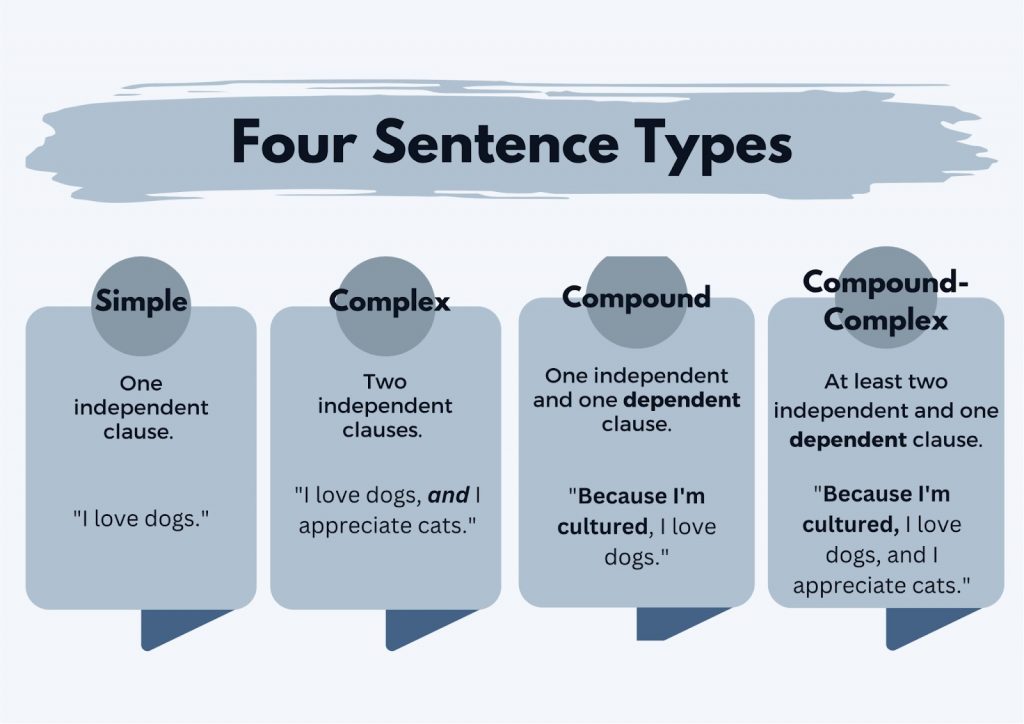
Understanding sentence structures is essential for helping students craft sentences that effectively communicate their ideas. Based on structure, sentences can be categorized into four main types:
- Simple Sentence: These sentences have one idea, with a subject and a predicate. They are straightforward and easy to grasp. For example, The cat sleeps. Have students create their own simple sentences by choosing a subject (e.g., a person or animal) and an action. For a twist, give them picture prompts to describe using simple sentences.
- Compound Sentence: These sentences join two or more independent clauses with a coordinating conjunction (for, and, nor, but, or, yet, so) or a semicolon. They connect related ideas. For example, The cat sleeps, and the dog barks.
Use these worksheets to help students practice forming compound sentences by matching clauses, completing sentence starters with conjunctions, and identifying compound sentences. These activities reinforce the use of and, but, so while building hands-on sentence-combining skills.
Begin here
to engage your students and simplify teaching
- Complex Sentence: These sentences include one independent clause and at least one dependent clause. They add more details or show relationships between ideas. For example, Although the cat sleeps, the dog barks.
Use these worksheets to practice forming complex sentences by matching clauses, completing prompts with subordinating conjunctions, and creating sentences using although, because, and when.
- Compound-Complex Sentence: These combine at least two independent clauses and one or more dependent clauses. They express complex relationships between ideas. For example, Although the cat sleeps, the dog barks, and the bird sings. Challenge students to write their own compound-complex sentences using sentence prompts or a word bank. You can also provide scrambled clauses for students to rearrange into a complete compound-complex sentence.
What is a Sentence Fragment?
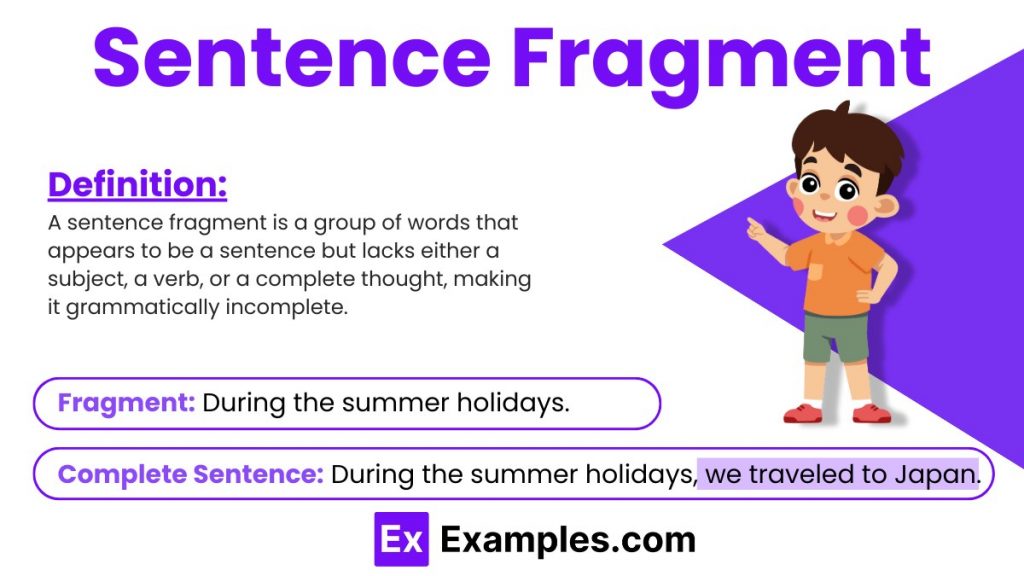
A sentence fragment is an incomplete sentence. It’s a group of words that don’t express a complete thought, often missing a subject, a verb, or both.
Example:
Fragment: “Because I was hungry.”
This doesn’t make sense on its own. What happened because you were hungry?
Complete Sentence: “I ate a sandwich because I was hungry.”
4 Core Sentence Patterns in English
A sentence consists of various elements such as subjects, verbs, objects, adjectives, adverbs, and other parts of speech. The structure of a sentence follows a specific order or pattern, which can vary depending on the language. English primarily uses these core structures:
Subject-verb-object (SVO): Here, the subject performs the action expressed by the verb on the object.
- Example: Sarah (subject) loves (verb) ice cream (object).
Subject-verb (SV): The structure consists of just a subject and a verb without an object.
- Example: The bird (subject) sings (verb).
Subject-verb-adverb (SVA): The structure adds an adverb to provide more information about the action.
- Example: She (subject) sings (verb) beautifully (adverb).
Subject-verb-indirect object-direct object (SVIDO): in this structure, there is a verb, an indirect object, and a direct object. The indirect object receives the direct object.
- Example: He (subject) gave (verb) his sister (indirect object) a book (direct object).
The arrangement of these elements within a sentence is crucial in determining its clarity, coherence, and overall meaning. Teaching these different types of sentences acquaints a child with different kinds of sentence structures, thereby improving their language proficiency.
How to Teach a Child to Write Sentences
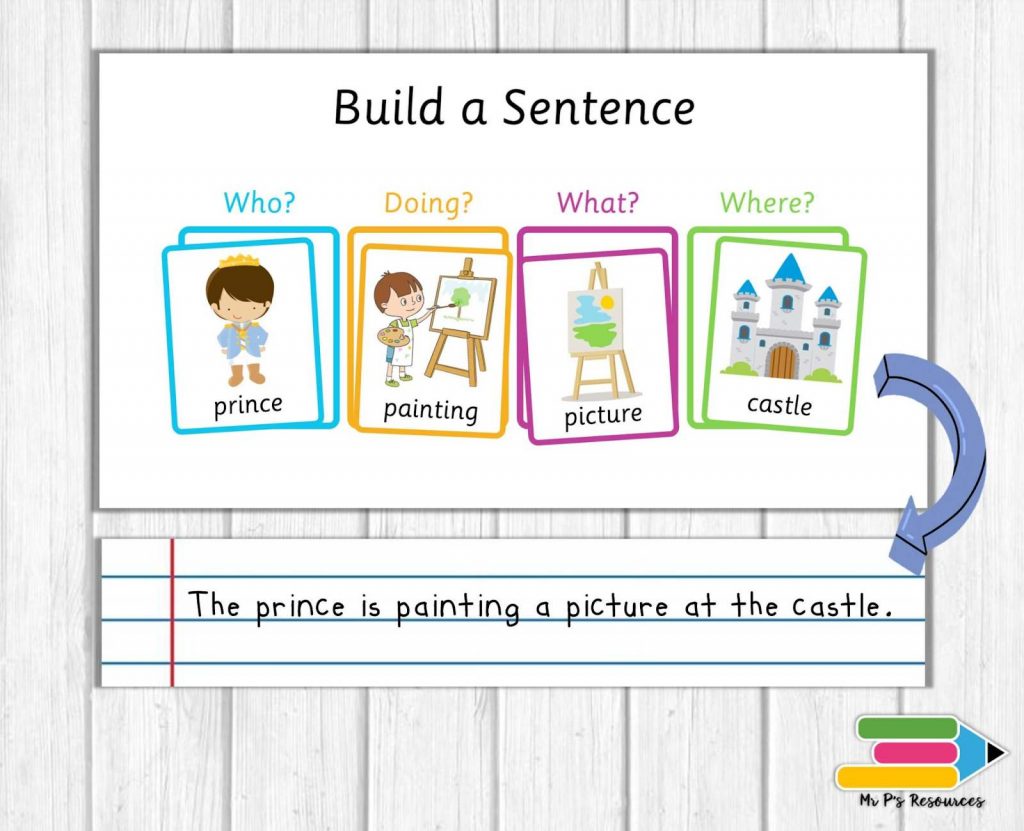
No matter how simple or complex a child’s writing abilities may be, teaching them how to write effective sentences is essential for their overall growth as communicators and writers.
‘You can’t use up creativity. The more you use, the more you have.’ This quote by Maya Angelou reminds us that encouraging children to express their creativity through writing enhances their sentence-writing skills and nurtures their imagination and self-expression.
So, to assist children in their journey of learning ‘how to write sentences effectively’, here are some helpful tips:
1. Teach Parts of Speech
Children need to understand the various parts of speech to construct meaningful and grammatically correct sentences. Ensure they can identify basic parts of speech: nouns, verbs, and adjectives. Engage children in activities that involve identifying and using various parts of speech in sentences. For instance, in the worksheets provided below, your child will identify and use various parts of speech in sentences. They will practice spotting nouns, verbs, adjectives, and other parts of speech in given sentences. Additionally, they will create their own sentences using specific parts of speech, helping to reinforce their understanding through practice.
Begin here
Related Reading: How to Teach Parts of Speech
2. Introduce the Concept of Subject and Predicate
Before diving into complex sentence structures, it’s crucial to introduce children to the basic components of a sentence. A sentence typically consists of a subject and predicate. Here are some fun worksheets where kids will identify, sort, and match subject and predicate. Use these as exit tickets in the classroom:
Begin here
3. Basic Sentence Structures
Introduce students to foundational sentence patterns, such as Subject-Verb (SV) and Subject-Verb-Object (SVO). Write a simple sentence like “I run” on the board. Ask students to expand it by adding objects or modifiers (e.g., “I run fast” or “I run in the park”). Alternatively, provide students with these sentence fragments worksheets and ask them to rearrange them into proper sentences.
Begin here
4. Sentence Expansion
Teach students to add more details to sentences using adjectives, adverbs, or prepositional phrases. Start with a basic sentence like “The dog runs.” Ask students guiding questions such as, “How does the dog run?” or “Where does the dog run?” to encourage them to expand it (e.g., “The big dog runs quickly in the park.”).
You can also create an anchor chart with examples of expanded sentences, highlighting how adjectives, adverbs, and phrases add detail.
5. Compound and Complex Sentences
Teach students to form compound sentences using coordinating conjunctions (FANBOYS) and complex sentences using subordinating conjunctions (e.g., because, although, when).
6. Sentence Purpose and Writing Frames
Teach students the four sentence purposes (declarative, interrogative, imperative, and exclamatory) and provide scaffolding to help them construct sentences independently. Use prompts like “Write a question about your favorite animal” or “Write a command for a classroom rule” to practice sentence purposes. Combine this with sentence frames such as “I like ___ because ___” or “When I ___, I feel ___” to guide sente
7. Expand Vocabulary
Building a rich vocabulary is essential for crafting compelling sentences. Research by Biemiller shows that a robust vocabulary enables individuals to express themselves more effectively and enhances their reading comprehension and overall language development.
Here are some strategies to help children expand their vocabulary:
- Encourage diverse book reading among your students to discover new words and concepts.
- Teach them to infer word meanings from surrounding text.
- Introduce age-appropriate dictionaries to learn definitions and related words.
- Engage them in puzzles and games for interactive vocabulary building.
- Present a new word daily and encourage its usage in sentences.
- Ask them to maintain a journal to record new words, meanings, and examples.
- Discuss interesting words from daily experiences.
Related Reading: How to Improve Kids' Vocabulary: 11 Best Tips
4 Fun Activities to Teach Sentence Structure
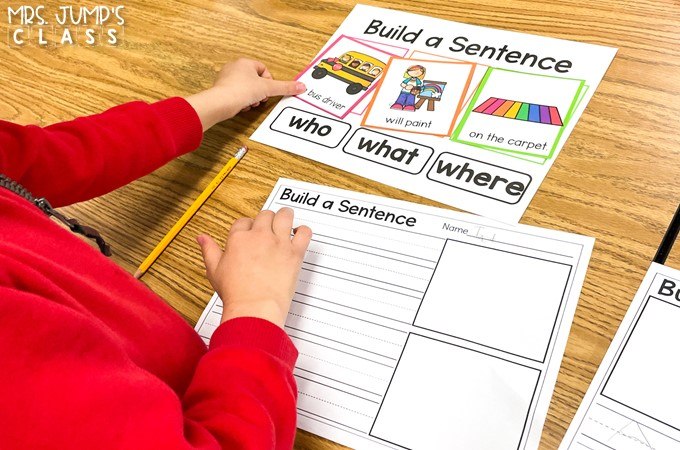
Practice indeed makes a person perfect; mastering sentence construction requires consistent and dedicated practice. If you are looking for fun ways on how to teach sentence structure, here are some great options:
- Provide Sentence-building Exercises
You can engage students in exercises that require children to identify and combine subject and predicate components. For example, give them a list of subjects and a list of predicates, and ask them to match and create complete sentences.
- Create Sentence Puzzles
When it comes to practicing sentence construction, repetition is key. By creating sentence puzzles, you can provide students with an enjoyable and interactive way to reinforce their skills. Jumble up words and challenge them to rearrange them to form grammatically correct sentences.
- Use Sentence-building Games
Games like ‘Sentence Relay’ or ‘Sentence Scramble’ can be used to make learning fun. These games not only provide opportunities to apply knowledge dynamically but also add to greater writing fluency.
- Provide Sentence Prompts
Sentence starters stimulate creativity and encourage kids to use different parts of speech. For example, ‘The ____________ is ____________,’ or ‘I felt ____________ when ____________.’ This activity nurtures creativity and helps kids to express themselves effectively.
If you are looking for worksheets where your child is prompted to fill in the sentences, here are some options:
Begin here
Related Reading: Amazing Writing Prompt For Kids To Improve Confidence
How to Improve Sentence Creation Fluency in Kids
Now that we have a basic understanding of teaching sentence structure to kids, let’s explore effective methods to improve sentence writing fluency. Here are two specific approaches that can be helpful:
1. Using Sight Word Sentences
Sight word sentences are sentences that primarily consist of high-frequency words that are commonly recognized by sight without requiring extensive decoding or phonetic analysis. These sentences are designed to help early readers develop fluency and automaticity in reading.
Here are a few examples of sight word sentences:
- I am happy.
- We went to the mall.
- The dog is black.
- My brother is tall.
- Look at the beautiful sunset.
- Can you find your shoes?
- The car is red.
- I love to swim.
- He is playing soccer.
- The book is on the shelf.
Sight words: I, am, the, is, we, to, my, you, can, find, your, on.
These are common words that often appear frequently in written texts and are taught as early foundational words for reading and writing.
Related Reading: Sight Words for First Graders That Kids Can Easily Learn
2. Using Dictation Sentences
Research has shown that our memory is significantly enhanced when we engage both our auditory and visual senses. One effective method to achieve this is through the use of dictation sentences.
Dictation sentences are sentences spoken or read aloud for the purpose of transcription or writing. In dictation exercises, a person listens to the sentences being dictated and writes them down exactly as they are heard.
This activity not only improves the listening skills of the students but strengthens their writing skills. Dictation sentences can also be used as a language learning tool or as a method of testing a person’s ability to transcribe spoken words accurately.
Let’s Make Sentence Teaching Fun!
‘How do I tell what I think until I see what I say?’ says E.M. Forster.
Elaborating on this, Richard Swedberg emphasizes that “in the very act of speaking you get to know what you think.” Moreover, he believes that this thoughtless entry into speech is common among writers who start without knowing what the end result would be and this is where it gets creative. Such is the importance of speech which has the power to interfere and even alter thought processes.
The key to this language mastery lies in the power of effective sentence structure lessons. By teaching it effectively, we equip young learners with the tools to express themselves clearly and confidently. We nurture their creativity and communication skills with engaging activities and interactive technology. So, let’s build a foundation for success, one sentence at a time!
Related Reading: Teaching Text Structure: Types, Examples, Tips & Activities
Frequently Asked Questions (FAQs)
How do you explain a sentence to kids in simple words?
A sentence is a group of words that expresses a complete thought. Just like we put different things together to make a sandwich, in the same manner, we combine different words together to form a sentence.
How can I teach sentence structure to children with learning difficulties?
Teaching sentence structure to children with learning difficulties requires patience and an approach tailored to their specific needs. You can use external teaching elements like visual aids (charts and graphs) and multisensory techniques (gestures) to make learning more engaging and accessible to them.
How can you evaluate your children's understanding of sentence structure?
There are various assessment methods that you can use to check your children’s understanding of sentence structure. You can provide them with simple exercises for sentence completion, word rearrangement, quizzes, etc. You can use more complex sentences for older kids and keep them simple for the younger ones.

















